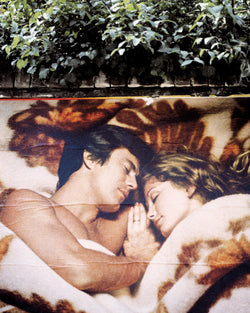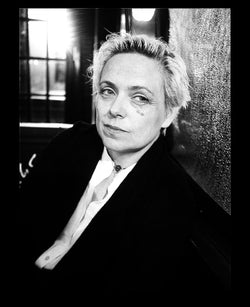Lily Bertrand-Webb’s studio is filled to the brim with folders of her archive collections. An impressive array of broken cameras and lots, and lots of photographs. In a photo of herself, in which she couldn't have been more than 3 years old, she’s holding her godfather’s camera and taking pictures. Another self-portrait is displayed in a lightbox that had recently been shown at the Timothy Taylor Gallery. Taken over lockdown, a difficult time in her life, she now finds it uncomfortable to look at.
With photographs that can be found in the permanent collection of The National Portrait Gallery, her subjects have ranged from the artist Damien Hirst, model Cara Delevingne, musician Rita Ora, novelist Elizabeth Day to the actor Barry Keoghan. Bertrand-Webb exists between Cornwall and Shepherd’s Bush Market, operating out of her studio at the end of Market Lane, a road saturated with garments, accessories, pets, food, homeware, and anything else you can imagine sold on a trestle table.
Many photographers make you aware of what’s in front of the lens, not behind it. They tend to be observers who erase themselves as they draw attention to their subjects. But what happens when a photographer steps outside of their role as impartial observer and turns the camera on themselves?
Webb isn’t interested in being an invisible photographer. Her lens is both introverted and extroverted, capturing the beauty she sees in others while using photography as a tool to witness her changing self. A visual archive of her experiences. She describes herself as always existing in ‘halves’, a notion that comes through in her ability to be both behind the camera and in front of it. Her work shows a clear intimacy with the self as well as with others.

































